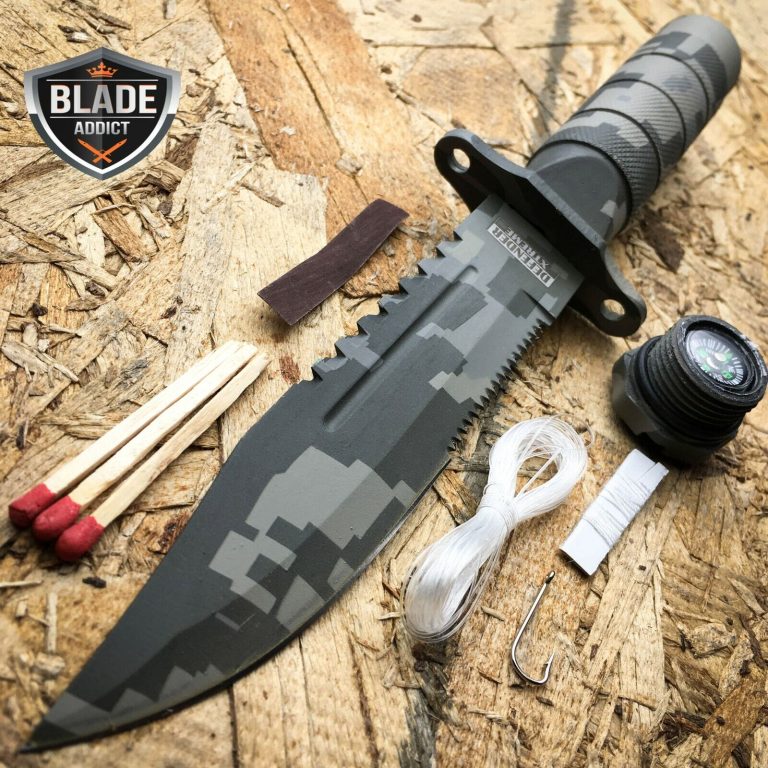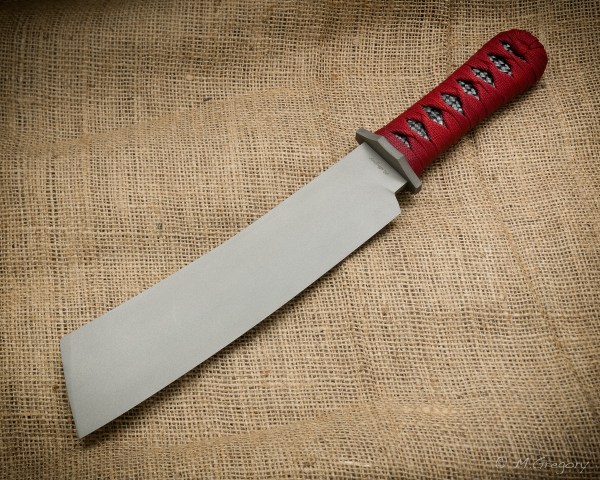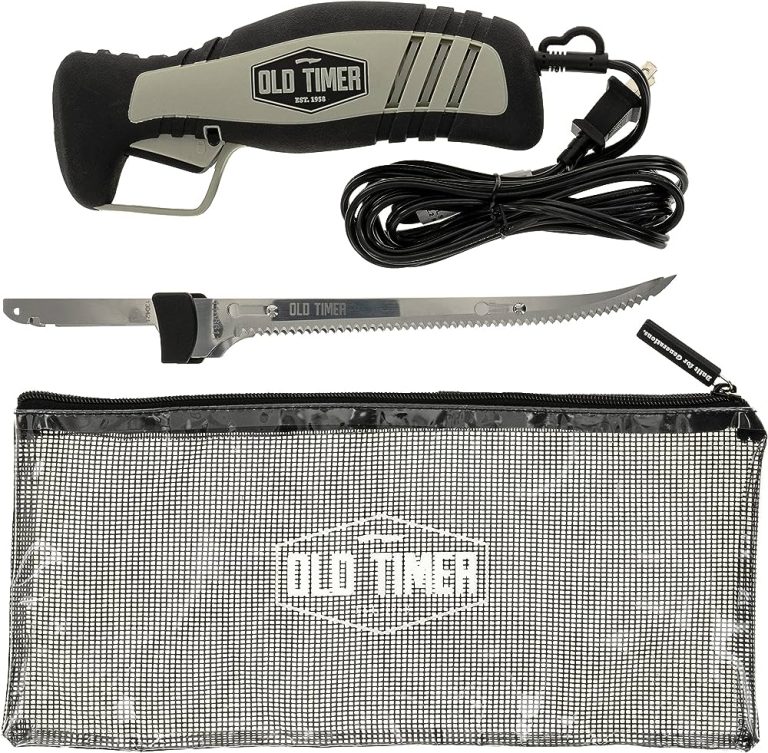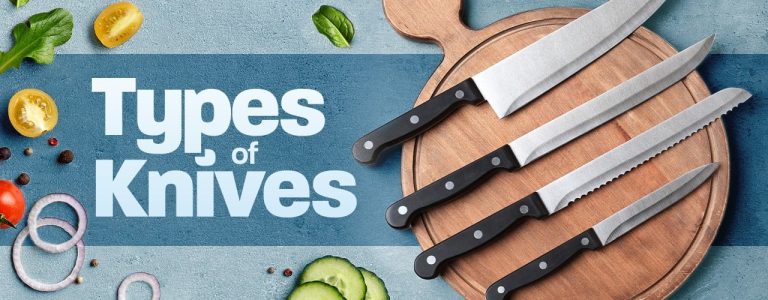What are the 3 Types of Knives You Want to Have in Your Kitchen?
The three types of knives you should have in your kitchen are chef’s knife, paring knife, and bread knife. These knives are essential for various cooking tasks and will help you in achieving precision and versatility in the kitchen.
In any well-equipped kitchen, having the right set of knives is crucial for efficient meal preparation. From chopping and slicing to peeling and carving, each knife serves a specific purpose. The first type, chef’s knife, is a versatile tool perfect for all-around tasks such as slicing, dicing, and mincing.
Paring knives, on the other hand, are small yet effective for detailed work like peeling fruits and vegetables. Lastly, a bread knife with its serrated edge is ideal for cleanly slicing through bread and cakes without crushing them. With these three essential knives, you’ll be able to handle a wide range of culinary tasks with ease and precision. Let’s explore each of these knives in more detail.

Credit: www.bonappetit.com
The Chef’S Knife: Versatile And Multi-Purpose
The chef’s knife is a versatile kitchen tool that every home cook should have. With its multi-purpose design, it can handle a wide range of tasks, making it an essential addition to any kitchen. Other must-have knives include the paring knife for precision work and the serrated bread knife for effortless slicing.
A chef’s knife is an essential tool that every kitchen should have. Its versatility and multi-purpose design make it the go-to knife for professional chefs and home cooks alike. In this section, we will explore the features and specifications of a chef’s knife, how it can handle various kitchen tasks, and why it is a must-have in your kitchen.
Features And Specifications Of A Chef’S Knife:
- Blade Length: Typically, a chef’s knife has a blade length ranging from 6 to 12 inches. The longer the blade, the more efficient it is for chopping and slicing.
- Blade Material: High-quality chef’s knives are often made from stainless steel or high-carbon steel. Stainless steel knives are resistant to rust and stains, while high-carbon steel knives offer superior sharpness and edge retention.
- Blade Shape: The blade of a chef’s knife usually has a curved edge, allowing for a rocking motion when cutting. This makes it easier to chop herbs, dice vegetables, and slice meats.
- Handle Design: The handle of a chef’s knife should be ergonomically designed for a comfortable grip, reducing fatigue during extended use. Handles can be made from various materials such as wood, plastic, or metal, each offering different levels of durability and maintenance.
How A Chef’S Knife Can Handle Various Kitchen Tasks:
A chef’s knife is incredibly versatile and can handle a wide range of kitchen tasks. Here are some of the tasks a chef’s knife excels at:
- Chopping: Whether it’s cutting through thick vegetables like butternut squash or mincing garlic, the chef’s knife’s sharp blade and curved edge make chopping tasks quick and efficient.
- Slicing: From slicing delicate fruits to carving roasts, a chef’s knife can make clean, precise cuts. Its long, thin blade allows for smooth slicing motions and reduces the risk of tearing or squishing food.
- Dicing: The chef’s knife is perfect for dicing onions, bell peppers, or any other vegetables. Its sharp blade and rocking motion enable you to make consistent, uniform cuts in no time.
- Mincing: When it comes to mincing herbs or garlic, a chef’s knife is the ideal tool. Its large surface area and sharp edge make it easy to finely chop ingredients without crushing them.
Why A Chef’S Knife Is A Must-Have In Your Kitchen:
- Versatility: The chef’s knife’s ability to handle a wide range of kitchen tasks means you won’t need multiple knives cluttering your kitchen drawers. From chopping to slicing and everything in between, this all-purpose knife has got you covered.
- Efficiency: With a chef’s knife in hand, you can accomplish your kitchen tasks more efficiently. Its sharp blade and ergonomic design allow for effortless cutting, reducing prep time and making cooking a breeze.
- Durability: Investing in a high-quality chef’s knife means you’ll have a long-lasting kitchen tool that can withstand years of use. Proper care and maintenance will ensure your chef’s knife remains reliable and ready for any culinary challenge.
The chef’s knife’s versatility, efficiency, and durability make it an essential tool in every kitchen. Its features and specifications, coupled with its ability to handle various kitchen tasks, make it a must-have for any aspiring cook or seasoned chef. So, equip your kitchen with a reliable chef’s knife and experience the joy of effortless cooking.
The Paring Knife: Precise And Delicate
When it comes to essential kitchen tools, the paring knife stands out for its precision and delicate handling. It is one of the three must-have knives for your culinary adventures.
Characteristics And Uses Of A Paring Knife
A paring knife is a versatile tool that every kitchen should have. This type of knife is typically small in size, with a sharp, pointed blade that tapers to a fine edge. Here are some characteristics and uses of a paring knife:
- Precise cutting: The sharp, narrow blade of a paring knife allows for precise cutting and trimming of fruits, vegetables, and other ingredients. Its fine point enables you to tackle intricate tasks with ease.
- Versatile kitchen companion: The paring knife’s versatility makes it perfect for a range of kitchen tasks. It can be used for peeling fruits and vegetables, deveining shrimp, removing seeds from peppers, and scoring meat, among other things.
- Portability: Paring knives are compact and lightweight, making them easy to maneuver and ideal for on-the-go meal prep or outdoor cooking.
How A Paring Knife Excels In Detail Work And Intricate Cutting
When it comes to detail work and intricate cutting, a paring knife really shines. Its fine point and sharp blade allow for precise control and delicate maneuvers. Here’s why a paring knife excels in this area:
- Intricate cuts: The narrow blade of a paring knife enables you to make intricate cuts, such as creating decorative garnishes or removing the skin from a tomato in one continuous motion.
- Controlled movements: The small size and light weight of a paring knife are advantageous when working with smaller ingredients or performing detailed tasks. You can easily manipulate the knife to achieve the desired level of precision.
- Delicate tasks: Paring knives are perfect for delicate tasks like seeding a chili pepper or deveining shrimp. The sharpness and fine point of the blade allow you to perform these tasks with minimal damage to the surrounding flesh or meat.
Benefits Of Having A Paring Knife In Your Kitchen Arsenal
Having a paring knife in your kitchen arsenal can bring several benefits to your cooking experience. Here are a few reasons why you should consider adding one to your collection:
- Versatile tool: A paring knife can handle a wide variety of tasks in the kitchen, including peeling, trimming, scoring, and intricate cutting. Its versatility makes it a valuable and practical tool to have on hand.
- Precise and delicate cuts: When it comes to precise cuts and delicate work, a paring knife is the go-to tool. Its sharpness and fine point allow for detailed and intricate tasks, elevating the presentation and quality of your dishes.
- Time-saving: The efficiency of a paring knife can save you valuable time in the kitchen. Its nimble size allows for quick and accurate work, minimizing the effort required for tasks like peeling and trimming.
- Portability and convenience: Paring knives are compact and lightweight, making them easy to store and transport. Whether you’re cooking at home or on the go, a paring knife can be your trusted companion.
A paring knife is an essential tool for any kitchen. Its precision, versatility, and ability to excel in detail work and intricate cutting make it a must-have for both amateur and professional chefs. Add a paring knife to your kitchen arsenal and enjoy the many benefits it brings to your culinary endeavors.
The Bread Knife: Slicing Through Crusty Loaves
Looking to stock your kitchen with essential knives? The bread knife is a must-have for slicing through crusty loaves. Alongside it, make sure to have a versatile chef’s knife and a precise paring knife for all your culinary needs.
A bread knife is an essential tool in any kitchen, especially for bread lovers. Its unique design and functionality make it the perfect tool for slicing through crusty loaves with ease. To understand why a bread knife is so essential, let’s dive into its distinctive features and the ways to effectively use it.
Unique Design And Functionality Of A Bread Knife
- Long serrated blade: The bread knife boasts a long blade with serrated edges, which allows for effortless slicing through crusty bread without crushing it.
- Pointed tip: The knife’s sharp, pointed tip helps penetrate the crust, making clean and precise cuts.
- Wide blade: A bread knife typically has a wider blade, providing stability while cutting through thick and soft bread.
- Offset handle: The handle of a bread knife is often slightly offset from the blade, ensuring your hand and knuckles don’t touch the cutting surface, reducing the risk of accidental cuts.
Ways To Effectively Use A Bread Knife For Cutting Bread
- Hold the loaf steady: Place the loaf on a cutting board and hold it steady with your non-dominant hand to ensure stability and even cuts.
- Gentle sawing motion: Utilize a gentle sawing motion to cut through the crust without applying excessive pressure, allowing the serrated blade to do its job effortlessly.
- Slice with precision: For perfectly even slices, begin each cut by lightly scoring the top of the loaf before applying more pressure and completing the slice.
- Avoid applying downward force: Let the serrated blade and the knife’s weight do the work, avoiding the need to apply downward force that may crush the bread.
Why A Bread Knife Is Essential For Every Bread Lover
- Crisp and clean cuts: With its unique serrated blade, a bread knife ensures clean and crisp cuts, leaving the crust intact and the interior fluffy and soft.
- Versatility: Not only is a bread knife ideal for slicing through crusty loaves of bread, but it can also be used for pastries, cakes, and delicate fruits like tomatoes.
- Professional-looking presentation: Slicing bread with a bread knife results in evenly cut slices, making your homemade sandwiches and toast aesthetically pleasing.
- Durability and longevity: A high-quality bread knife can last for years with proper care, making it a worthwhile investment for bread enthusiasts.
Every bread lover should have a bread knife in their kitchen. The unique design and functionality of this tool, along with its versatility and ability to deliver precision cuts, make it an essential item. Whether you enjoy a crusty baguette, a fluffy loaf of sourdough, or a sweet brioche, a bread knife is the perfect companion for all your bread slicing needs.
So go ahead, add this fantastic tool to your kitchen arsenal and elevate your bread game!
Frequently Asked Questions Of What Are The 3 Types Of Knives You Want To Have In Your Kitchen?
What Are The 3 Essential Kitchen Knives?
The 3 essential kitchen knives are the chef’s knife, paring knife, and bread knife.
What Knives To Use In The Kitchen?
Use a chef’s knife for versatile tasks, a paring knife for detailed work, and a bread knife for slicing bread.
What Is The Most Common Knives Used In The Kitchen?
The most common knives used in the kitchen are the chef’s knife, paring knife, and serrated knife.
What Are The Four Basic Types Of Knives?
There are four basic types of knives: chef’s knife, utility knife, paring knife, and bread knife.
Conclusion
Having the right knives in your kitchen is essential for efficient and enjoyable cooking experiences. By understanding the three types of knives that every home cook should have, you can elevate your culinary skills and achieve better results. The chef’s knife, with its versatility and precision, is a must-have for most tasks.
The paring knife, with its smaller size and sharp edge, is perfect for intricate work. And finally, the serrated knife is essential for cutting through bread and other delicate items without crushing them. By investing in these three types of knives, you’ll have the tools you need to tackle any recipe with confidence.
Remember to keep your knives sharp, clean, and stored properly to extend their lifespan. So, go ahead and equip your kitchen with these essential knives and enjoy the convenience and precision they offer.







What’s up Dear, are you actually visiting this web page regularly, if so then you will definitely get nice knowledge.
What’s up everyone, it’s my first go to
see at this web page, and paragraph is genuinely fruitful for me, keep up posting such posts.
Рекомендуем ножы на кухне.
Хорошо нож иметь на кухне.
My knives are all dull in the kitchen.
Thank you for info
Hi I was picking knives for so long.
Thank you for this article
Helped me to choose the best knifes for my kitchen as I like to cook.
Great job